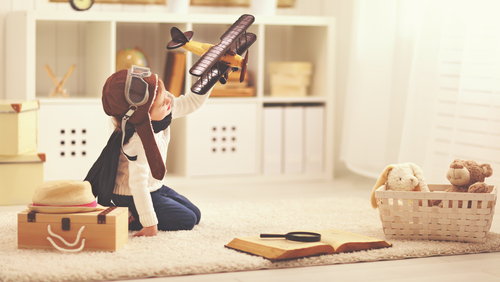You have decided that it is appropriate to allow your child to drop his nap. But you would like to introduce a quiet time to ease the transition. If you have followed the guidelines from "Is your child ready to stop napping?” and have determined it is time to eliminate the nap, read on.
I LOVE quiet time and here is why:
Your child may be ready to give up his nap, but that doesn’t mean that he doesn't need a little down time in the afternoon. Quiet play may allow his body to rest enough to be his happy go lucky self in the afternoon. It’s a nice transition out of the nap.
- You may have other children who are still napping, so you still have to be home and it is a good way to keep your toddler quiet while the others rest.
- Mom, Dad or caregiver need a little time to themselves too. Taking care of children is hard work, so having a little break can recharge you for the afternoon antics and fun.
Here is what you do:
1. Prepare your child’s room so that he can be free to play, but also be safe.
- Baby proof outlets.
- Remove or secure any furniture that could topple over if climbed.
- Remove choking hazards (small toys or cords).
- Install a video monitor for extra supervision
2. Empower your child with the excitement of a new transition
Tell your toddler that he no longer has to take a nap when he goes to his room. You can make it really exciting. Tell him that he is a big boy(girl) and no longer needs to go to sleep and that he is old enough to have quiet time all by himself. yay
3. Have a quiet time routine.
Just like the nap and bedtime routine, you need a quiet time routine. This can consist of some of the things you had in your nap routine. Like a story time together. Then take a potty break or diaper change. Get a sip of water. Then pick out a select number of toys to take to his room. 5 is a good number. This can include books, blocks, action figures or dolls. Only include toys he can play with safely unsupervised. (stay away from markers fro obvious reasons)
Keep in mind this is a great time to let your child’s imagination grow. They don’t need to have everything with them, so keep it limited and avoid electronics. I used to love to listen to my son come up with ways to keep himself entertained. He would talk to himself or engage in imaginative play. I would find myself hiding outside the door listening in on his play. It’s amazing what you can learn about your child’s mind when they don’t know you’re watching.
4. Make sure that the expectations are clear.
Parents, you can outline your own rules, but these are some good ones to follow
- Must play kindly with toys; no breaking things
- Play must be quiet enough not to wake any siblings that might be sleeping down the hall. Not silent, but quiet.
- Must stay in room till time is up. Avoid the excuses by preparing ahead. Make sure they have gone potty and had a sip of water, they are well fed and have been hugged and had their attention cup filled.
- Explain the consequence for breaking these rules. I required that they take a nap if they could not follow the rules. The toys would be removed and they must lay quietly in bed. But because you have empowered them with the responsibility of quiet time, they usually will be happy to stick with it to keep from having to nap.
Sometimes parent might feel that quiet time feels like punishment. But try to think of it as a growing and learning opportunity. If you go into it with a positive attitude, they will be more positive towards it too.
5. Decide on an amount of time that they can have to themselves.
I always felt one hour was a good amount of time. It gave me the chance to have a few moments to myself in peace to work on things around the house, but not so much time my toddler couldn’t keep himself entertained and get bored. Then when time is up, go in and get them. Give them a big hug and tell them how proud you are of them for being so independent.
Do you have quiet time in your house? I’d love to hear about things you do to keep your children safely entertained in their quiet space.


